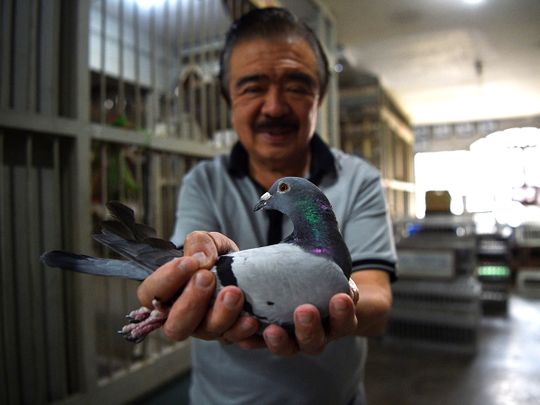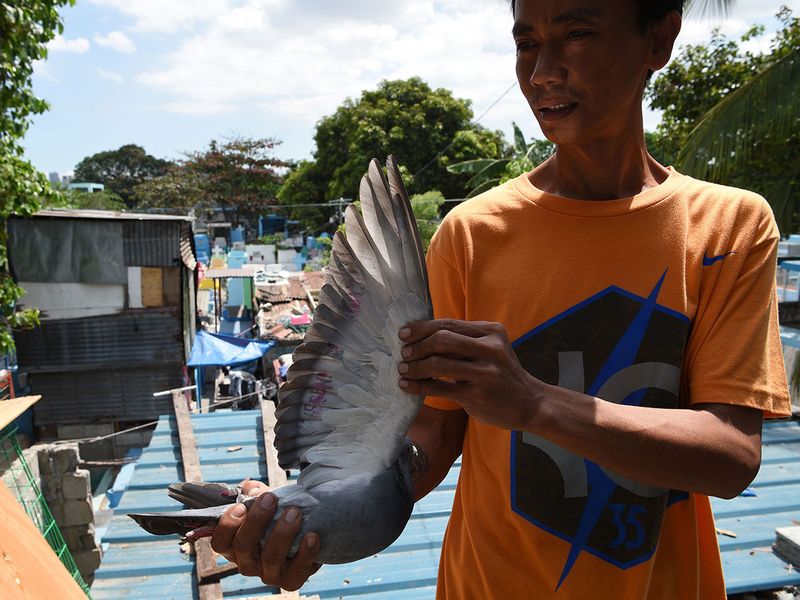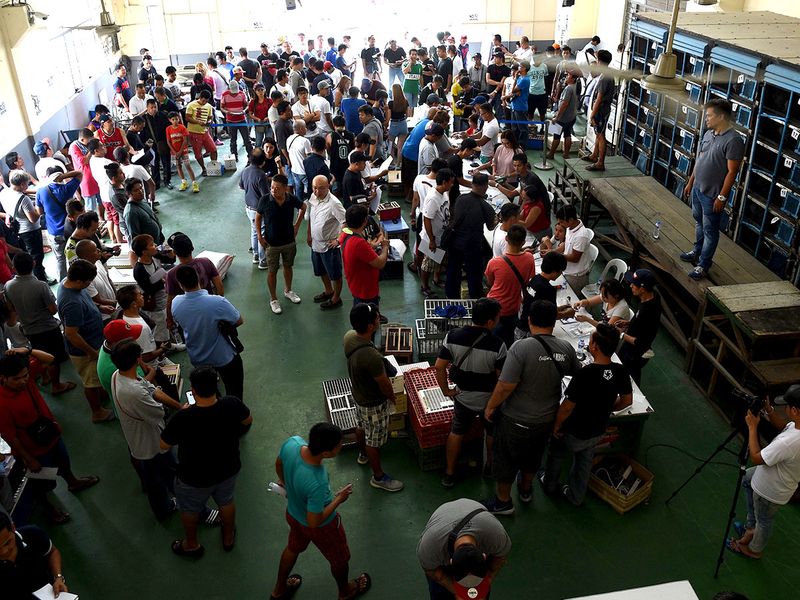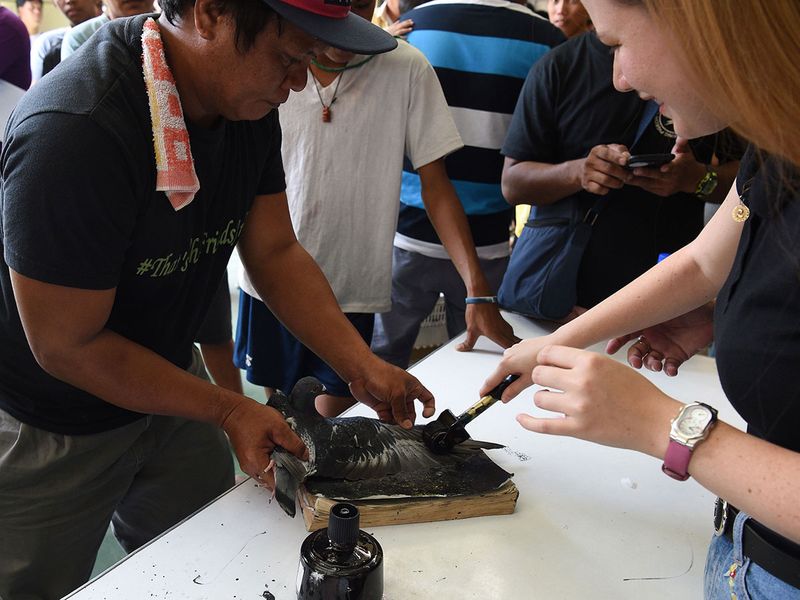
MANILA: It is a brutal 600-km gauntlet during which competitors face searing heat, wild seas, vicious predators, and the threat of kidnapping.
Only one in ten will finish.
This is the MacArthur competition — the Philippines’ longest homing pigeon race. It’s a tough challenge for the birds and a tense affair for the owners.
“Compared to Europe and the United States, we have lots of predators here and a lot of people who shoot these birds,” said Jaime Lim, one of the Philippines’ best-known pigeon fanciers — as the pursuit’s devotees are known.
“Fishing nets are set up in the mountains to capture these birds. That’s a major problem nowadays,” the 68-year-old construction magnate added.

Racing pigeons can be worth thousands of dollars but some that are kidnapped are sold off to unscrupulous fanciers for as little as $14 (Dh52), Lim explained.
It’s a nefarious side effect of the hobby’s swelling popularity in the Philippines, where there are now at least 300 clubs with thousands of members.
This mirrors increasing popularity in other Asian countries, particularly India, Taiwan and China.
In March, a Chinese buyer spent a record €1.25 million (Dh5.15 million) at an auction for Belgium’s best long-distance racing pigeon of all time.
1 in 10
birds make it back home from the treacherous 600km race, on averageAccording to Encyclopedia Britannica, the sport began in Belgium, where the first long-distance race was held in 1818. The European nation remains the global hub for enthusiasts.
Gambling appeal
The appeal in the Philippines seems to be a mix, including the bird’s fascinating navigational skills and a touch of hunger for a quick profit.
Fancier Mary Grace San Jose, 38, is from the poor district of Tondo in Manila and says one draw is that racing is open to everyone.
“What is important is you are able to feed them,” she told AFP, adding: “You may not afford what the rich give their birds … but that’s fine.”
Money remains part of the appeal for many though.

“It does not look good, but the opportunity to gamble is part of it,” Eddie Noble, an official of the 1,000-member Metro Manila Fanciers Club, told AFP.
Noble said the main driver, though, is the pure excitement of “racing these birds with a phenomenal ability to find their way home”.
Science has never concretely explained the homing pigeon’s skills.
The two more popular theories posit that they follow the Earth’s magnetic field lines and rely on their sense of smell.
One new hypothesis says that the birds use ultra-low frequency sounds that map out the terrain.
That ability is put to the test in the MacArthur.
50 % to 70%
are snared by kidnappers’ nets, shot, or taken by predators“Ten per cent, at the most, make it back,” race director Nelson Chua said of the event, which begins in the MacArthur town on the island of Leyte.
“We can say that 50-70 per cent were snared by nets, shot, or taken by predators,” he said.
Lim insisted secrecy is necessary to protect the birds: “If they [kidnappers] get wind of the date of the race that’s when they put their nets up.”
Worried parents
Most of the rest are picked off by hungry predator birds, felled by tropical heat and exhaustion or even the occasional typhoon in a competition that lasts at least ten hours.
Those that survive fly directly to their coups in the Manila area. Their owners must then retrieve a code affixed to the pigeon’s foot and call it in to race organisers, which is how finishing order is determined.
For Ashley Fruno, of the People for the Ethical Treatment of Animals group, the three sea crossings in the MacArthur race — rather than poachers, are to blame for the 90 per cent casualty rate, which she said is among the world’s deadliest.

“There’s nothing sporting about forcing animals to risk — and often lose — their lives so that someone can win a prize, a title or some money,” Manila-based Fruno told AFP.
She added that the pigeons fly low over water to avoid wind, and so many die when hit by waves or succumb to exhaustion.
Fanciers claim they wait for their birds to return like worried parents.
“It might take a few days, but they always come back unless they are caught by net,” said San Jose.
“If they don’t, I’ll spend days at their rooftop loft, waiting for them,” she added.
But she conceded, she has no idea what happened to her last two entries in the MacArthur race — they didn’t make it back.











